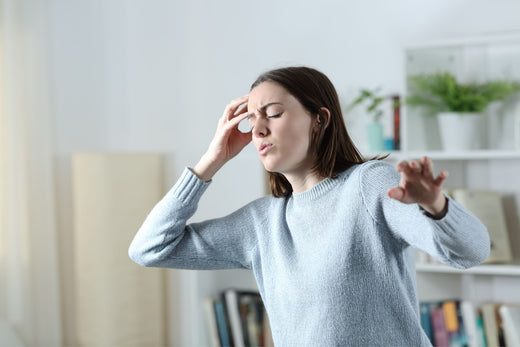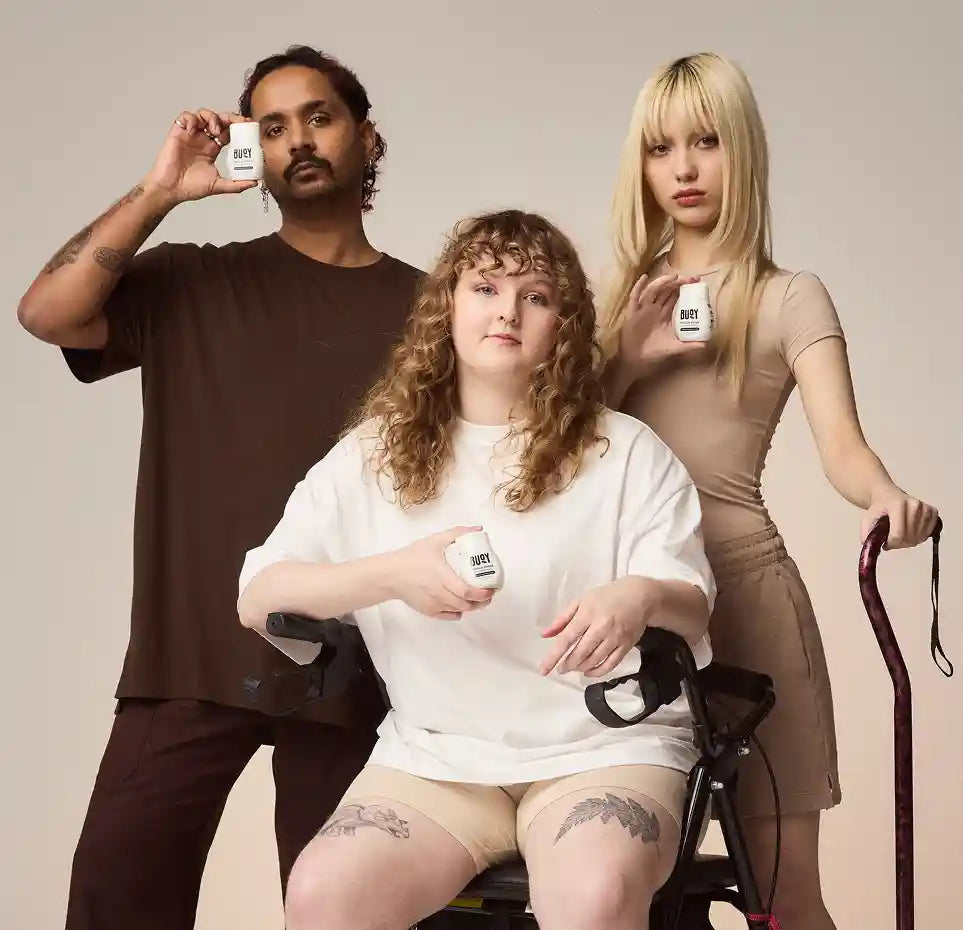
Symptoms of POTS: A Comprehensive Guide
Living with Postural Orthostatic Tachycardia Syndrome (POTS) can feel like a rollercoaster ride – your heart races, your head spins, and you might even feel like you’re going to faint. Sound familiar? If so, you’re not alone. POTS is a condition that affects the autonomic nervous system, causing a range of symptoms that can make daily life a challenge.
Recognizing the symptoms of POTS is super important for getting diagnosed and finding the right treatment plan for you. Many people with POTS go years without a proper diagnosis because the symptoms can be mistaken for other conditions.
This guide will help you understand the key signs of POTS and their impact on your life. We’ll cover common symptoms like rapid heartbeat and brain fog, as well as lesser-known ones like gastrointestinal issues and sleep problems. You’ll also learn about the different types of POTS and find practical tips for managing your symptoms and improving your quality of life with effective POTS treatment strategies.
Essential Takeaways:
- Recognizing the Symptoms of POTS for Early Diagnosis: Understanding the common symptoms of Postural Orthostatic Tachycardia Syndrome (POTS), such as dizziness, rapid heartbeat, and brain fog, is crucial for early diagnosis and effective management. Being aware of these signs can help you seek timely medical advice and quickly start a treatment program tailored to your unique needs.
- Managing POTS with Lifestyle Changes and Support: Effective management of POTS often involves lifestyle modifications like increasing fluid intake, wearing compression garments, and exercising regularly. Exploring alternative therapies such as biofeedback and mindfulness techniques, along with building a strong support network, can significantly enhance your ability to cope with POTS and maintain a fulfilling life.
Whether you’re newly diagnosed or have been living with POTS for years, we’re here to support you every step of the way. Let’s get started on this journey together. With the right knowledge and tools, you can take control of your POTS symptoms and start living your best life.
Are you new to POTS? Start at the beginning with our informative guide: What is Postural Orthostatic Tachycardia Syndrome (POTS)?
- Common Symptoms of POTS
- Cardiovascular Symptoms
- Neurological Symptoms
- Gastrointestinal Symptoms
- Other Symptoms
- Recognizing Symptom Patterns
- Impact of POTS Symptoms on Daily Life
- Seeking Medical Help
Common Symptoms of POTS
Let’s talk about the main symptoms of POTS, what causes POTS, and the types of POTS. While everyone’s experience is unique, there are some common signs that many POTS patients share. These symptoms can be divided into a few main categories:
- Cardiovascular Symptoms: Such as rapid heartbeat (tachycardia), heart palpitations, and blood pressure changes (often low when standing).
- Neurological Symptoms: Including dizziness, lightheadedness, brain fog, trouble concentrating, headaches, and migraines.
- Gastrointestinal Symptoms: Like nausea and vomiting, abdominal pain and discomfort, bloating, constipation, and diarrhea.
- Other Common Symptoms: Such as fatigue and weakness, tremors or shakiness, exercise intolerance, and sleep disturbances.
A telltale sign of POTS is a significant increase in heart rate of 30 beats per minute or more within 10 minutes of standing up, a test often used for diagnosis. If you’re experiencing a combination of these symptoms, it’s important to talk to your doctor. Early diagnosis can make a big difference in managing POTS effectively (1,2).
Types of POTS
Did you know there are actually different types of POTS? It’s true! While the core symptoms are similar, the underlying causes and specific manifestations can vary. Let's break it down:
- Neuropathic POTS: This type is related to damage or dysfunction of the small fiber nerves that regulate blood vessel constriction. It can lead to blood pooling in the legs and those signature POTS symptoms like dizziness and rapid heartbeat.
- Hyperadrenergic POTS: In this type, the body produces too much norepinephrine, a stress hormone that can cause a rapid heartbeat, sweating, and shakiness. It's like your body's fight-or-flight response is in overdrive!
- Hypovolemic POTS: This one's all about blood volume. If you have low blood volume, it can be harder for your body to maintain blood pressure when you stand up, leading to those POTS symptoms.
- Primary POTS: This type of POTS isn’t caused by another underlying condition. Instead, it’s thought to be due to a problem with the autonomic nervous system itself. It’s like your body’s wiring is a little off, making it harder to regulate things like heart rate and blood pressure.
- Secondary POTS: Sometimes, POTS can develop as a result of another underlying condition like diabetes, Lyme disease, or an autoimmune disorder. Treating the underlying condition can often improve POTS symptoms (3).
While the specific type of POTS can guide treatment decisions, the good news is that many of the management strategies are similar across the board. Things like staying hydrated, increasing salt intake, wearing compression garments, and exercising regularly at a comfortable pace can be helpful for all types of POTS.
So if you've been diagnosed with POTS, don't hesitate to ask your doctor about which type you might have. It can give you a better understanding of your condition and help guide your treatment plan. And remember, no matter what type of POTS you have, you're not alone! There's a whole community of POTS champions out there ready to support you.
Cardiovascular Symptoms
Let’s dive a little deeper into those cardiovascular symptoms. Tachycardia is a medical term for a rapid heartbeat – we’re talking about a heart rate over 100 beats per minute (a normal resting heart rate for adults is from 60 to 100 beats per minute) (3).
With POTS, this often happens when you stand up, as your body struggles to regulate your heart rate properly. It can leave you feeling exhausted, even if you’ve barely moved!
Orthostatic Hypotension
Orthostatic hypotension is another common issue. This means your blood pressure drops when you stand up, which can make you feel dizzy or lightheaded. You might even feel like you’re about to faint. This happens because your body isn’t effectively constricting your blood vessels to maintain blood pressure when you change positions (2).
Heart Palpitations
Heart palpitations are another symptom many people with POTS experience. This can feel like your heart is racing, fluttering, or skipping beats. It can be triggered by things like standing up, eating a large meal, or feeling stressed (2).
Neurological Symptoms
POTS can also cause a range of neurological symptoms that can make daily life a bit more challenging. Dizziness and lightheadedness are common, especially when standing or sitting up. This can make simple tasks like showering or cooking feel overwhelming and difficult to manage.
Brain Fog
Brain fog is another symptom that can be frustrating. You might find it hard to concentrate, remember things, or find the right words when speaking. This can impact work, school, and your social life. But there are strategies that can help like breaking tasks into smaller steps, using memory aids, and taking regular breaks.
Headaches
Headaches and migraines are also common in POTS. They can be triggered by dehydration, stress, or changes in blood flow. Keeping a headache diary can help you identify and avoid triggers (1,2).
Gastrointestinal Symptoms
GI symptoms are another piece of the POTS puzzle. Nausea and vomiting can be frequent and unpredictable. Some people find that eating smaller, more frequent meals can help, as can avoiding triggers like fatty or spicy foods.
Abdominal Pain and Discomfort
Abdominal pain and discomfort are also common. You might feel bloated, gassy, or have cramping pain. Over-the-counter remedies like peppermint or ginger tea can sometimes provide relief.
Digestive Issues
Digestive issues like constipation and diarrhea can also be a symptom of POTS. Staying hydrated, eating a balanced diet with plenty of fiber, and regular exercise (as tolerated) can help bring your digestion back to balance (3).

Exercise intolerance is a common symptom of POTS, making it challenging for patients to engage in physical activities without experiencing fatigue and other symptoms.
Other Symptoms
POTS can cause a variety of other symptoms that can vary from person to person. Let’s explore some symptoms that we haven’t already covered.
Chronic Fatigue
Chronic fatigue is a big one – you might feel exhausted even after a full night’s sleep. Pacing yourself, prioritizing tasks, and learning to say no can help you manage your energy levels.
Exercise Intolerance
Exercise intolerance is another common issue. Physical activity might leave you feeling completely wiped out, or even trigger other symptoms like rapid heartbeat or dizziness. Working with a physical therapist can help you find safe ways to stay active.
Tremors or Shakiness
Some people with POTS also experience tremors or shakiness, especially in their hands. This can be triggered by adrenaline or low blood sugar. Eating regular meals and practicing relaxation techniques can help.
Sleep Problems
Sleep disturbances are another challenge many POTS patients face. You might have trouble falling asleep, staying asleep, or feeling rested in the morning. Creating a consistent sleep routine, avoiding caffeine and screens before bed, and keeping your bedroom dark and cool can improve your sleep quality (1,2,3).
Everyone’s Experience is Different
Remember, not everyone with POTS will have all of these symptoms. But if you’re experiencing a combination of them, it’s important to contact your doctor. With the right POTS diagnosis and treatment plan, many people are able to effectively manage their symptoms and maintain a good quality of life.
And don’t forget – you’re not alone in this. The POTS community is full of amazing, supportive people who understand what you’re going through. Reach out, connect, and know that you have a team behind you every step of the way.
Recognizing Symptom Patterns
One of the keys to managing POTS effectively is learning to recognize patterns in your symptoms. This can help you identify triggers, predict flare-ups, and develop coping strategies.
Keeping a Diary of Your Symptoms
Start by keeping a symptom diary. Write down what symptoms you experience, when they occur, and any potential triggers like certain foods, activities, or stressors. There are also apps available that can make symptom tracking easier.
Over time, you may start to see patterns emerge. Maybe you notice that your heart races every time you stand up too quickly, or that you feel more fatigued after eating a big meal. Recognizing these patterns can help you anticipate and manage your symptoms better.
Tracking Your Symptoms
Tracking your symptoms is also important for getting an accurate diagnosis and developing an effective treatment plan. Bring your symptom diary to your doctor’s appointments to give them a clear picture of what you’re experiencing.
Impact of POTS Symptoms on Daily Life
Let’s be real – living with POTS can be challenging. Symptoms like fatigue, brain fog, and dizziness can make everyday activities feel like an uphill battle. You might find it harder to keep up at work or school, or to participate in social activities.
Fortunately, there are ways to manage these challenges. It’s all about finding the strategies that work for you. That might mean pacing yourself throughout the day, finding accommodations at work or school, or learning to say no when you need to rest.
Find out how simple lifestyle changes can help your POTS symptoms in our Practical Guide to Lifestyle and Diet Changes for Managing POTS.
Building a Strong Support Network
It’s also important to build a strong support network. Surround yourself with people who understand what you’re going through – whether that’s friends and family, a support group, or an online POTS community. Don’t be afraid to ask for help when you need it.
Remember, your worth is not defined by your productivity. It’s okay to prioritize your health and well-being, even if that means doing things differently than you used to.
Seeking Medical Help
If you suspect you might have POTS, it’s important to seek medical help. Don’t wait until your symptoms become severe. Early diagnosis and intervention can make a huge difference in managing this condition effectively.
Preparing for Your Appointment
Start by making an appointment with your primary care provider. Come prepared with a list of your symptoms, how long you’ve been experiencing them, and any patterns you’ve noticed. Your symptom diary can be a big help here.
Specialist Referral
If your doctor suspects a POTS diagnosis, they may refer you to a specialist like a cardiologist or neurologist for further testing. They may also recommend a POTS treatment plan, including lifestyle changes, medications, or other treatments to help manage your symptoms.
Self-Advocacy
It’s important to advocate for yourself and be persistent if you don’t feel like your concerns are being heard. If your doctor isn’t familiar with POTS, consider seeking a second opinion from a provider who specializes in autonomic disorders.
Remember, you are your own best advocate. Trust your body, and don’t hesitate to speak up about what you’re experiencing. With the right medical support and self-care strategies, it is possible to live well with POTS.
Support from Buoy
And don’t forget – Buoy is here to support you every step of the way. Our guides, hydration products, and online community are all designed to help you navigate life with POTS with a little more ease. You’ve got this!

Discover Buoy’s POTS-strength liquid electrolyte, formulated 6x stronger than our best-selling Hydration Drops, optimized to help you manage POTS symptoms.
References
- Cleveland Clinic. (2022). Postural Orthostatic Tachycardia Syndrome (POTS). Retrieved from https://my.clevelandclinic.org/health/diseases/16560-postural-orthostatic-tachycardia-syndrome-pots
- Zhao, S. & Tran, V.H. (Updated August 7, 2023). Postural Orthostatic Tachycardia Syndrome. Retrieved from https://www.ncbi.nlm.nih.gov/books/NBK541074/
- WebMD. (2023). What Is Postural Orthostatic Tachycardia Syndrome (POTS)? Retrieved from https://www.webmd.com/heart-disease/atrial-fibrillation/postural-orthostatic-tachycardia




